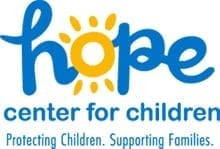Hope Center for Children’s programs recognized as evidence-based by NREPP
January 3, 2017The recent publication of results from a large National Institute of Mental Health-funded research study prompted Substance Abuse and Mental Health Services Administration’s National Registry of Evidence-based Programs and Practices (NREPP) to include the comprehensive model of care accredited for use by Hope Center for Children, the Teaching-Family Model (TFM), as a promising evidence-based practice.
As of December 5, 2016, NREPP, a highly selective registry of evidence-based practices in mental health services, officially recognizes the Teaching-Family Model as a promising evidence-based practice for the treatment of “Non-specific Mental Health Disorders and Symptoms.”
The study published in the Journal of Emotional and Behavioral Disorders found the Teaching-Family Model to “produce significantly better outcomes” for youth post-discharge. “Short-term gains are relatively common, but for developing youth, shifts in long-term trajectories form the springboard for improved development, socialization, functioning and flourishing,” write the study authors.
Teaching-Family Model programs at Hope Center for Children provide that springboard for children who have experienced abuse or neglect, as well as families who have identified risk factors for child abuse or neglect.
The Teaching-Family Model has been recognized as a promising evidence-based practice since 2008 by the California Evidence-Based Clearinghouse for Child Welfare (CEBC), a similar and oft-cited registry of evidence-based programs. The American Psychological Association has recognized the Model as an evidence-based practice since 2003, prior to the creation of NREPP or CEBC.
The American Psychological Association’s profile of the Teaching-Family Model suggests that the Model has “given hope” that children and families facing extreme stress “with even the most difficult problems or behaviors can improve the quality of their lives and make contributions to society.”
“The Teaching-Family Model provides comprehensive care as a program model for children, youth and families focused on building relationships and services that are client-centered, strengths-based, trauma-informed and outcome-driven,” reads a release from the Teaching-Family Association, an international community of care providers using the Model in a wide range of contexts.
The Teaching-Family Model has been successfully adapted to use in many different service deliveries and for many different populations, from children in the child welfare or juvenile justice systems to at-risk youth and families and even adults with developmental disabilities. Hope Center for Children uses the Teaching-Family Model in all of its residential programs and in the Family Strengthening program.
“This model is very effective when working with children who are healing from the trauma of child abuse and neglect,” said Chamlee Loscuito, Chief Executive Officer at Hope Center for Children. “Because it is based on finding teachable moments throughout the day and emphasizes building relationships, it is also taught to parents in our Family Strengthening prevention program where it is well received by parents under extreme stress.”
About Hope Center for Children:
Hope Center for Children, formerly the Children Shelter of the Upstate and Ellen Hines Smith Girls’ Home, exists to build stable, healthy families and provide children a safe place from abuse and neglect. We have five primary programs that work toward this goal; two programs serve families with increased risk of abuse or neglect, two provide around-the-clock care for children who are victims of abuse or neglect and one program works with youth at risk of homelessness. In the past 12 months we have served 831 families and 2,183 children in our community. For more information on Hope Center for Children, visit www.hopecfc.org or call 864-583-7688.














